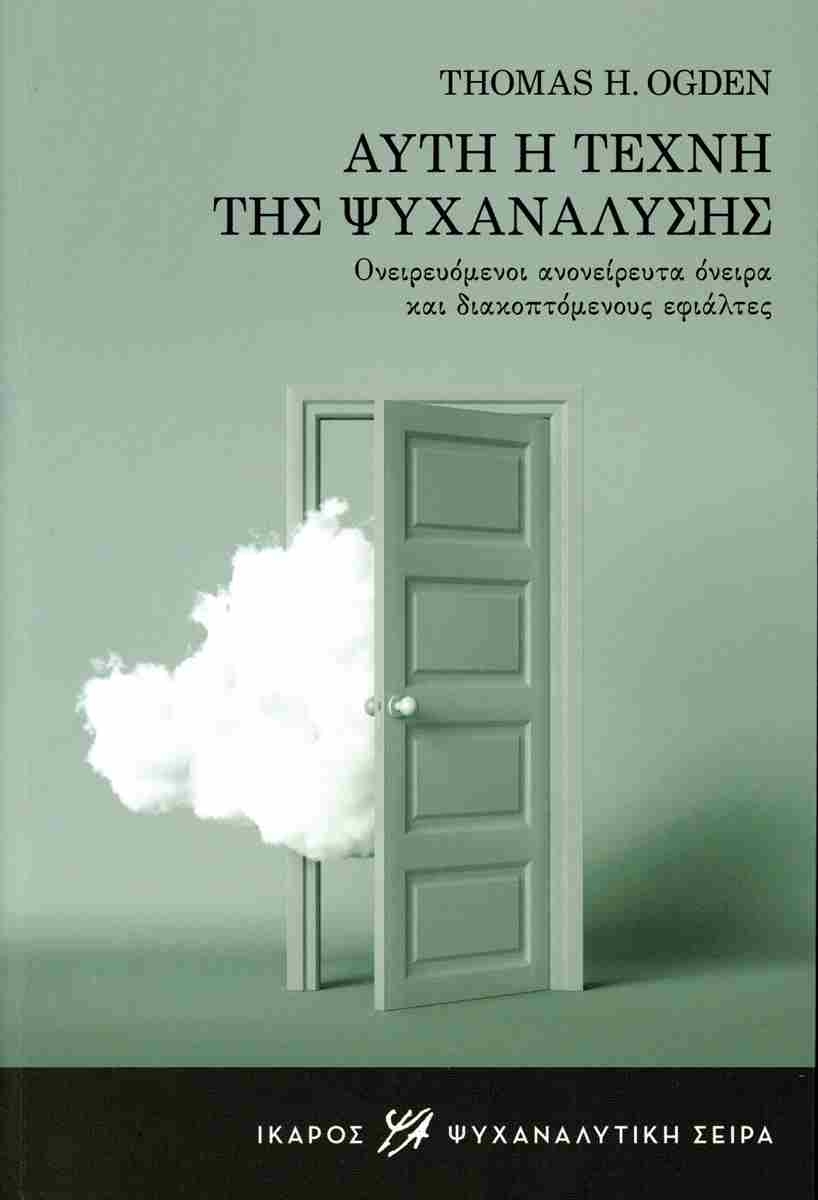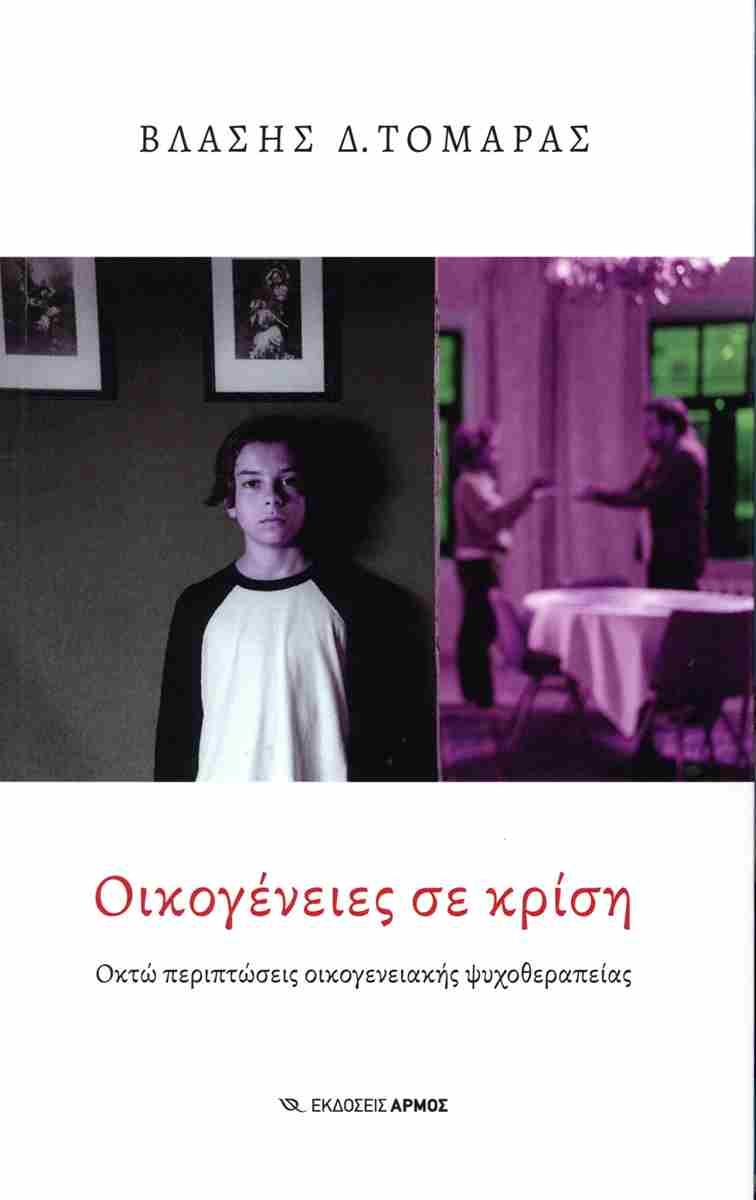Scientific editing for the Greek edition – Introduction – Notes: Gregory Vaslamatzis, Emeritus Professor of Psychiatry, Psychoanalyst
Reviewed by Katia Charalabaki, Psychiatrist, Systemic Psychotherapist
The author of this book is Thomas Ogden, teaching Psychoanalyst of the Psychoanalytic Institute of Northern California, member of the International Psychoanalytical Association, and director of the Center for the Advanced Study of Psychoses for 25 years. In his book, original ideas regarding psychoanalysis and its definitions are developed, and cases of psychoanalytic psychotherapy are presented, described, and studied in detail.
Ogden notes that psychoanalysis is an emotional experience and thus, cannot be translated, explained, understood or put into words. It is what it is. However, it is possible to say something about this living experience that would be useful in provoking thoughts concerning aspects of what occurs between analysts and their patients when they are involved in the psychoanalytic work. In psychoanalytic writing, as in poetry, the condensation of words and meaning draws from the power of language to imply that which it cannot say. There is a detailed description of the experience, where patient and analyst think, talk and dream previously undreamt or interrupted dreams.
The author points out that a person goes to an analyst because they experience psychic pain, and they are either unable to dream (perform, that is, unconscious psychic work), or they are so upset from what they dream that their dreaming process is interrupted. Patient and analyst are involved in an experiment aiming at creating the necessary conditions for the analysand to increase their capability to dream their undreamt and interrupted dreams. And the analyst “speaks”. What they say must be utilised by the patient in order to dream their own experience, and thus, bring their existence more fully to life.
As the editor of the Greek edition of the book, Gregory Vaslamatzis underlines that through Ogden’s references one can see Winnicott’s work, recognising in it the shifting of the epicentre of psychoanalysis from the symbolic concept of play to the experience of playing itself.
Furthermore, the author making use of the work of classic psychoanalytic authors (Freud, Klein, Fairbrain, Winnicott, Bion), creates the concept of “ontological psychoanalysis” (connected to existence and being), in contrast to epistemological psychoanalysis that is connected to knowledge and understanding.
Ogden’s reference to Bion’s theory, concerning the dreaming function and one’s inability to dream, is detailed. According to Bion there are “beta elements” (unprocessed sensory impressions that cannot be connected to one-another, and thus cannot be used in the processes of thinking, dreaming or creating a memory). There are also “alpha elements” that are elements of experience that can be connected to one-another in the process of conscious and unconscious thinking and dreaming (both when one is awake and when they are asleep). A failure of the alpha function means that the patient cannot dream, and thus can neither sleep nor wake up (this is the condition that describes the psychotic patient).
The dreaming function is a continuous function that occurs both during sleep and during the unconscious wakeful life. An individual that does not possess this function cannot dream in any of these two states, and cannot differentiate perception from illusion, nor internal from external reality. A distinction is also made between dreams and depictions during sleep that are not dreams, as they do not imply any unconscious psychic process.
Afterwards, the concepts of nightmare and terror are defined. A nightmare is a dream during which the psychic pain of the individual has undergone unconscious psychic processing that contributes to their psychic development. A night terror does not comprise a dream, it does not produce any dream thought, does not contain psychic processing and does not contribute to any change. And Ogden concludes: the analyst to which patients go for help (experiencing either nightmares or terrors) must also possess the capacity for reverie, that can enter transference – countertransference, thus contributing to him participating in dreaming the dreams that the patients are unable to dream on their own. This is the aforementioned experiment, in which analysand and analyst are involved.
An important element of Ogden’s work is the introduction of the term values in the psychoanalytic process, not as a concept of morality or a code of conduct, but referring to certain values that are situated at the core of the practice of psychoanalysis, such as: being humane, facing the truth, thinking out loud, not knowing (the analyst’s and analysand’s capacity to not know, to marvel at the mystery, the unpredictability and the power of the unconscious). Ogden concludes that “not knowing is a precondition for being able to imagine. The imaginative capacity in the analytic setting is nothing less than sacred”. (Note: a distinction is made between imagination and fantasy as the latter is constantly repeated and goes nowhere).
Also in the book, there is a new reading of “object relations theory”, delving deeper into the concepts of Mourning and Melancholia, utilising Freud’s work (1917b). A comparison is made between the nature of melancholia and the natural emotion of mourning, with the key feature being the diminished self-esteem that is prevalent in melancholia but absent in mourning. (In mourning the world becomes poor and empty; in melancholia, this is true for the ego itself including ambivalence). These elements are connected to object relations of the internal and the unconscious. Finally, a psychiatric reading of the relationship of melancholia and mania is attempted.
Then there is a reference to the capacity to dream and “on not being able to dream”, neither during the day nor at night. Dreaming (according to Bion) creates consciousness and unconsciousness and retains the difference between the two. The forms of dreaming, both in sleep and in wakefulness, create a dynamic barrier that separates and connects conscious and unconscious life. A conclusion here is that dreaming is what makes us human. And, of course, in the analyst – analysand relationship, the field of “dreaming” of transference–countertransference and the symbolism of these dreams, through interpretations, contribute to the deeper understanding of the issues that emerge during the therapeutic process.
Some of the issues about psychoanalysis that the author points out and discusses concern “what is real and whose idea it is”, “saying something one believes to be true”, “what is true and for whom” and “what is true and whose idea it is in an analytic session”.
In a following chapter, an extensive description and commentary is made of Bion’s work, followed by a reference to “holding and containing”, and “being and dreaming”.
The book concludes with a discussion of “psychoanalytic writing”. This chapter begins with the following autobiographical reference by Ogden: “For more than thirty years analytic writing has been one of life’s pleasures for me. It would be of great satisfaction to be able to provide the reader a glimpse into the nature of that experience and something of what I have learned from it”. We wholeheartedly pray he does!
I will conclude with several personal resonances: As Gregory Vaslamatzis mentions, Ogden does not identify with a particular theoretical framework and does not consider himself a member of any analytic “school”. He refrains from participating in psychoanalytic conventions or other events of the psychoanalytic community and only speaks through his writing and his clinical work. My conclusion is that he exists far from the “business field” of the various corporations, or in other words is an “anti-star”.
And a reference to personal experience: Setting out to read this book, I felt like a student. To begin with, I thought it was a difficult text. Furthermore, I was not familiar with some of its key concepts, and even though I had read quite a bit of Bion, I was totally ignorant of the concept, for instance, of “undreamt dreams”. HOWEVER: While reading the book, and after having read it, it captivated me and I feel like my dreaming capacity has increased; I definitely have more dreams while sleeping, maybe when I am awake too… Could this be an issue that needs to be presented to a psychoanalyst of Ogden’s orientation? Who knows…


